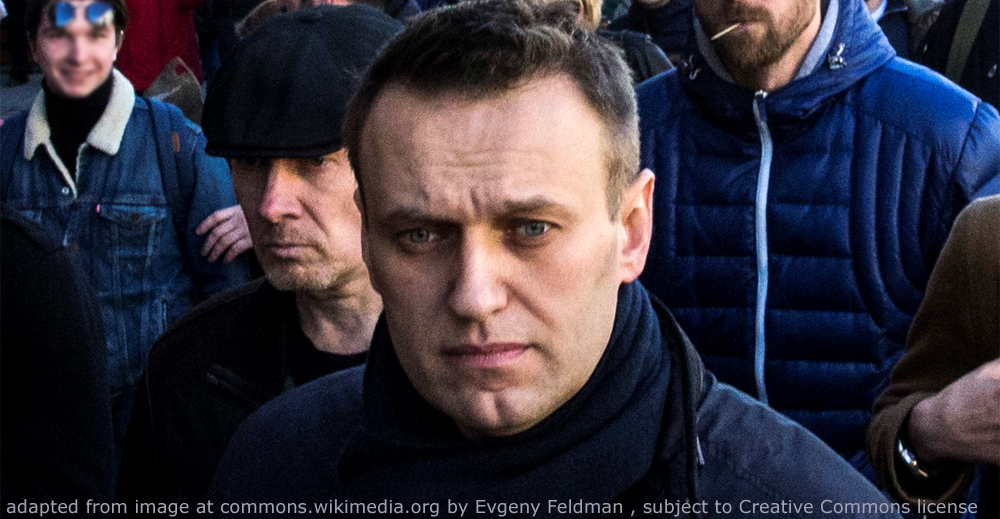People Keep Paying Their Respects At Navalny's Grave Despite Police Presence And Arrests
People continued to come and pay their respects on March 2 at the grave of Aleksei Navalny, who was buried in Moscow on March 1 following his suspicious death in an Arctic prison last month, despite a high police presence at the cemetery and the arrest of more than 120 people across Russia for taking part in rallies to honor the memory of the late opposition politician.
Navalny was laid to rest in a cemetery near his childhood home in Moscow as tens of thousands of supporters defiantly risked reprisals from the authorities as police kept them from joining in the services.
Lithuania-based Russian journalist Aleksandr Plyushchev reposted on his Telegram channel a message from a a woman who visited the Borisovskye cemetery in the morning of March 2 and said security forces were still at the cemetery in high numbers while iron fences installed the previous day ahead of the funeral procession were still there.
The woman said “lots of flowers are still being brought, and people keep coming,” and posted several photos showing Navalny's grave covered by fresh flowers and wreaths. The woman mentioned that security forces did not rush people, allowing them to spend as much time as they wanted at the cemetery.
Alla Abrosimova, the mother of Navalny's wife, Yulia, visited her son-in-law's grave again on March 2, together with Navalny's mother. A photo of the two mothers was posted on Telegram.
Abrosimova on March 1 posted a video in which she delivered a speech at Navalny's grave.
“Yulia called me 10 times today. 'Tell him [Aleksei Navalny] directly that I love him immensely. Although you don’t have to talk, because he knows it very well.' And you know, somewhere he is happy, because not everyone gets to love and be loved like that,” Abrosimova said in the video.
Yulia Navalnaya, who lives outside Russia for security reasons, did not attend the service. But she posted an emotional letter and video on Instagram paying tribute to her husband, saying he made her laugh, even when he was imprisoned.
"I don’t know how to live without you, but I will try my best to make you up there happy for me and proud of me. I don't know if I'll manage it or not, but I will try," she said, alluding to her pledge to continue her husband's work to bring democracy and freedom to Russia.
Relatives and close associates were allowed to be present at the Church of the Icon of the Mother of God for a brief funeral ceremony for President Vladimir Putin's most prominent foe before the burial in nearby Borisovskoye Cemetery.
Police forces were out in large numbers across Russia, and although no immediate incidents were reported during the funeral ceremony, more than 120 people were later detained in Moscow, St. Petersburg, Novosibirsk, Yekaterinburg, and other Russian cities for participating in rallies in Navalny's memory.
In Novosibirsk, police detained at least 18 people, according to Coalition Novosibirsk 2020 and Sibirmedia.
In Moscow, according to the Avtozak Telegram channel, at least 17 people were detained.
Among those detained in Moscow were Mikhail Shneider, former deputy head of the opposition People's Freedom party, or PARNAS, which was shut down by authorities in May, and Andrei Morev, the deputy head of the Moscow branch of the Yabloko party, and his colleague Alexander Efimov. Morev was later released without any official registration of his arrest.
Meanwhile, the First Department human rights project reported that courts in four Russian regions have declared Navalny's name an "extremist symbol."
First Department reported that the designation was used against three participants in rallies in Navalny’s memory in the Chelyabinsk, Krasnodar, and Murmansk regions. The designation was reportedly used in the Ulyanovsk region, too.
During the funeral procession on March 1, many people threw flowers at the hearse carrying the coffin to the cemetery as some mourners broke down metal fences to get closer to the vehicle. Chants like "Russia will be free," "No to war," and "Putin is a murderer," could be heard from the crowds.
The U.S. ambassador to Moscow and several other Western diplomats attended the funeral.
"Aleksei Navalny's work was dedicated to sharing a vision of a better future for Russia and all Russians. And ultimately, he gave his life for his patriotic service. For many Russians, he remains a symbol of what Russia could and should be," the U.S. Embassy in Moscow said in a post on Telegram.
French President Emmanuel Macron and German Chancellor Olaf Scholz hailed both Navalny's memory and the courage of those who attended his funeral in a message on X, formerly Twitter.
"It took a lot of courage to go pay tribute to Aleksei Navalny. Thousands of Russians found it within themselves. This is his legacy. Memory eternal," Macron wrote.
Scholz wrote that "Aleksei Navalny paid for his fight for democracy and freedom with his life."
"After his death, courageous Russians are carrying on his legacy: Many of them were at the funeral today and took a big risk -- for freedom," he added.
Navalny's death was announced on February 16 at the Polar Wolf prison colony in the Russian Arctic, where he was serving a 19-year term on extremism and other charges that he and his supporters had rejected as politically motivated.
Authorities claimed his sudden death was prompted by "natural causes" and then refused to release his body to his family for about a week.
The Kremlin has repeatedly denied any involvement or responsibility for Navalny's death.
[please be sure to consider clicking the support button, to support this web project and related efforts]
Key Words: Russia, Navalny, Human Rights, Russian Prisons, Russian Politics, Russian Oppression, Russian Opposition
